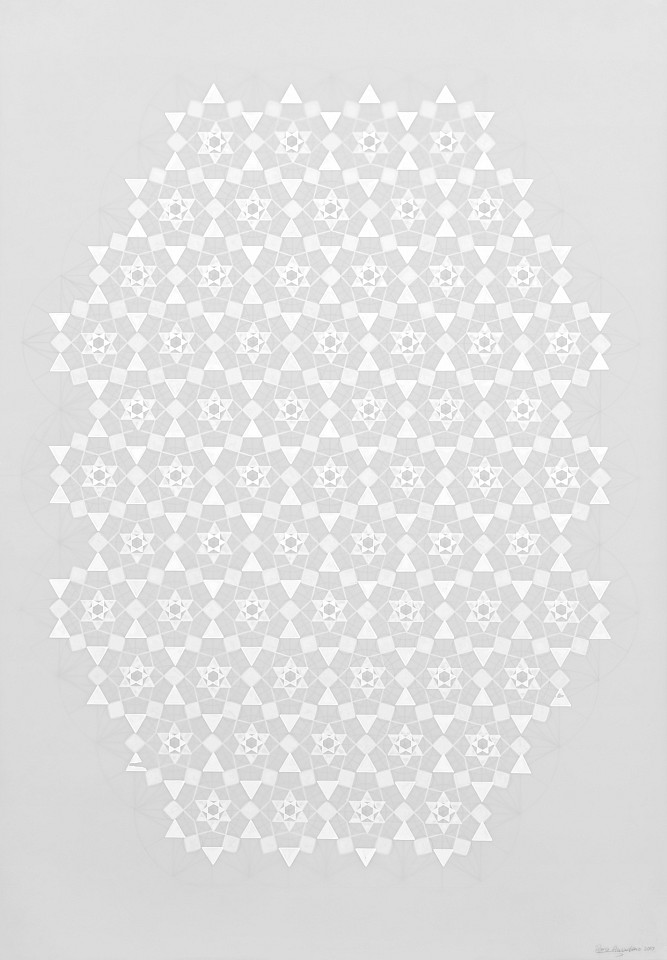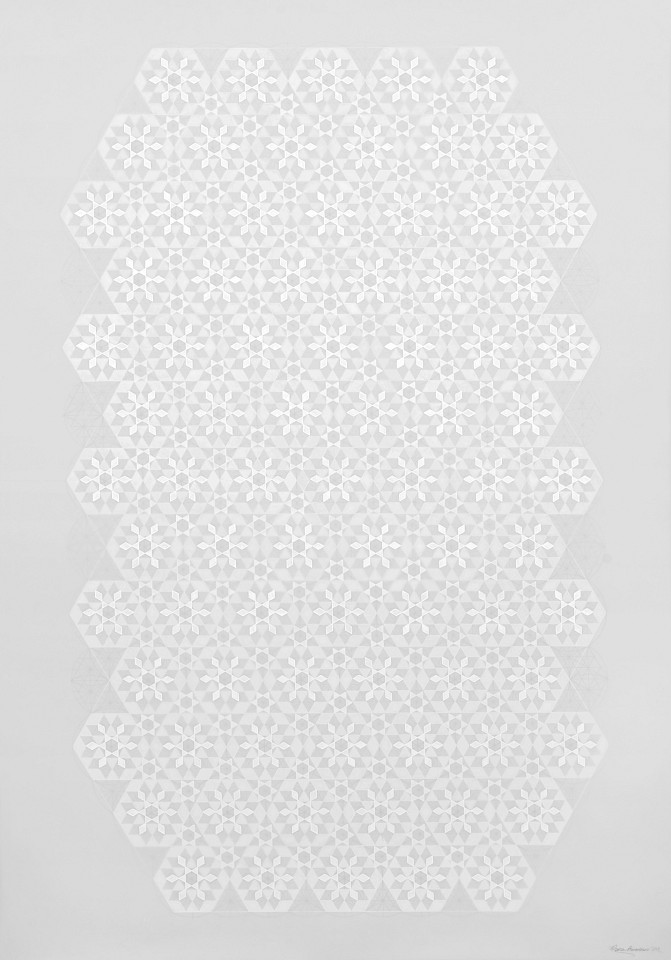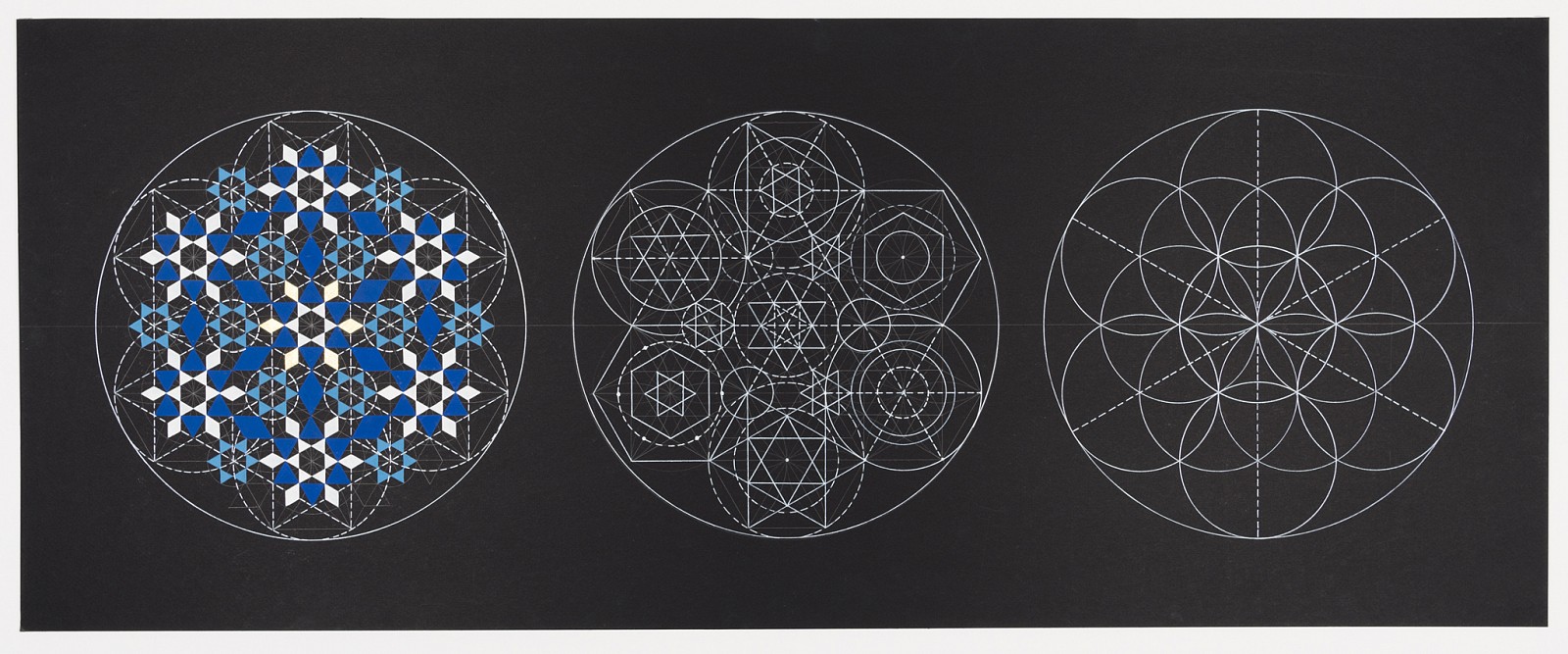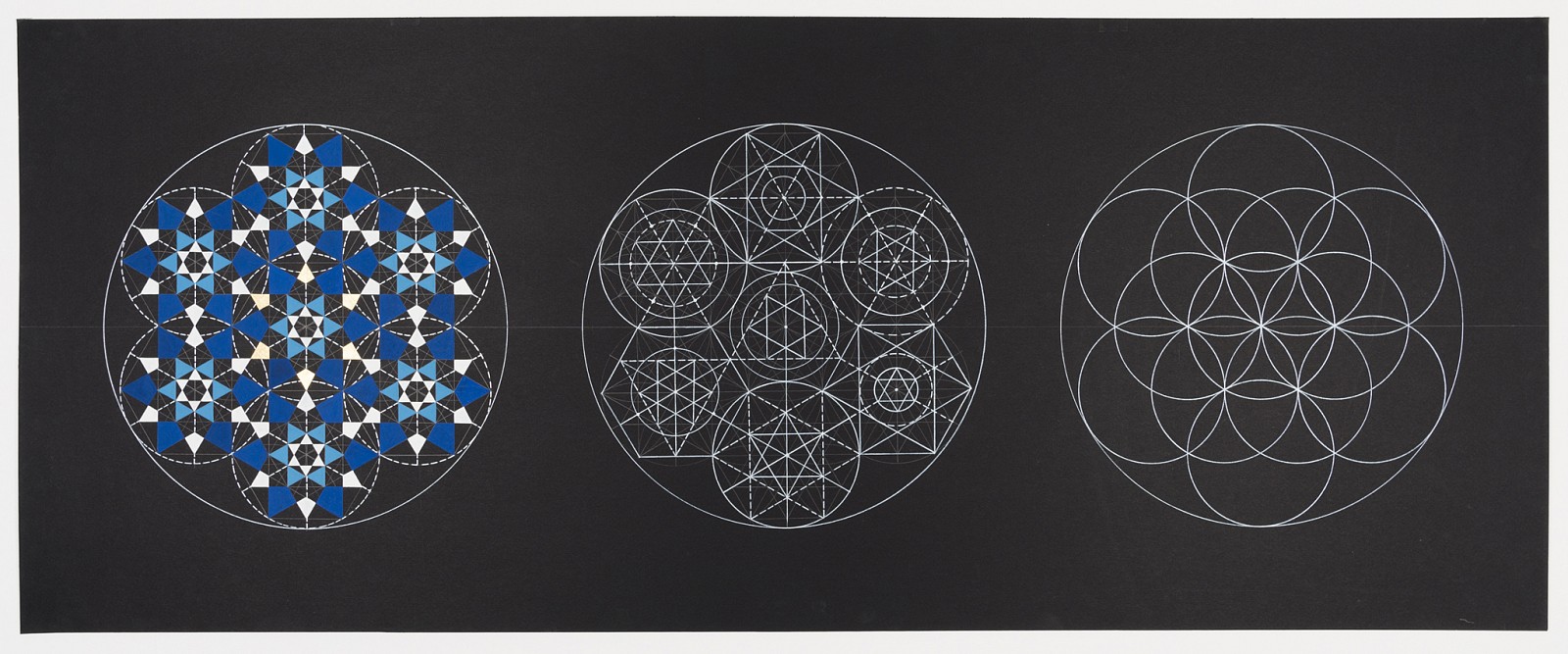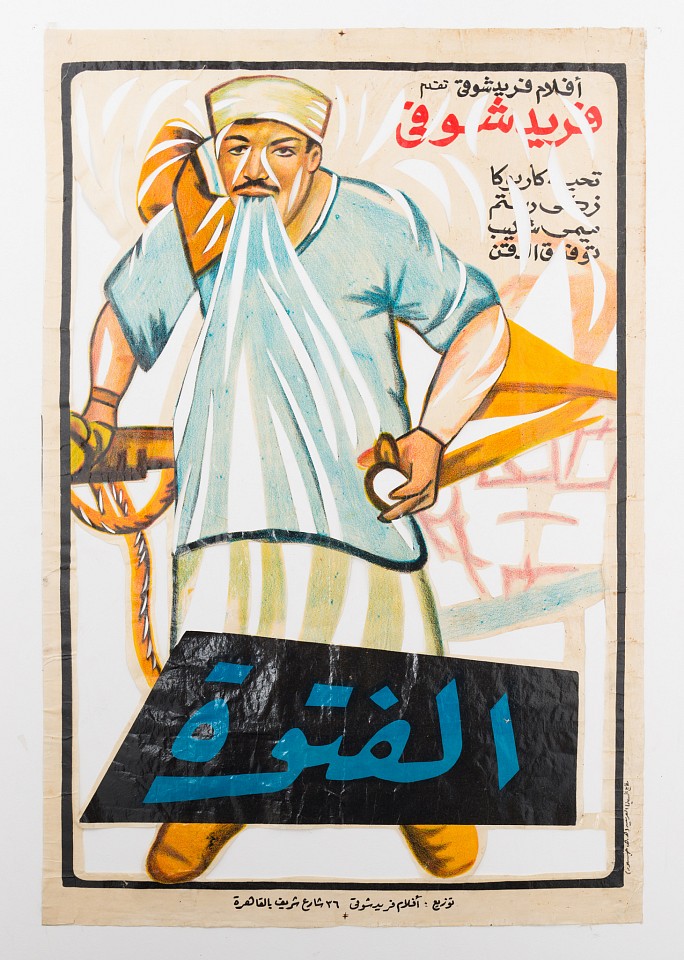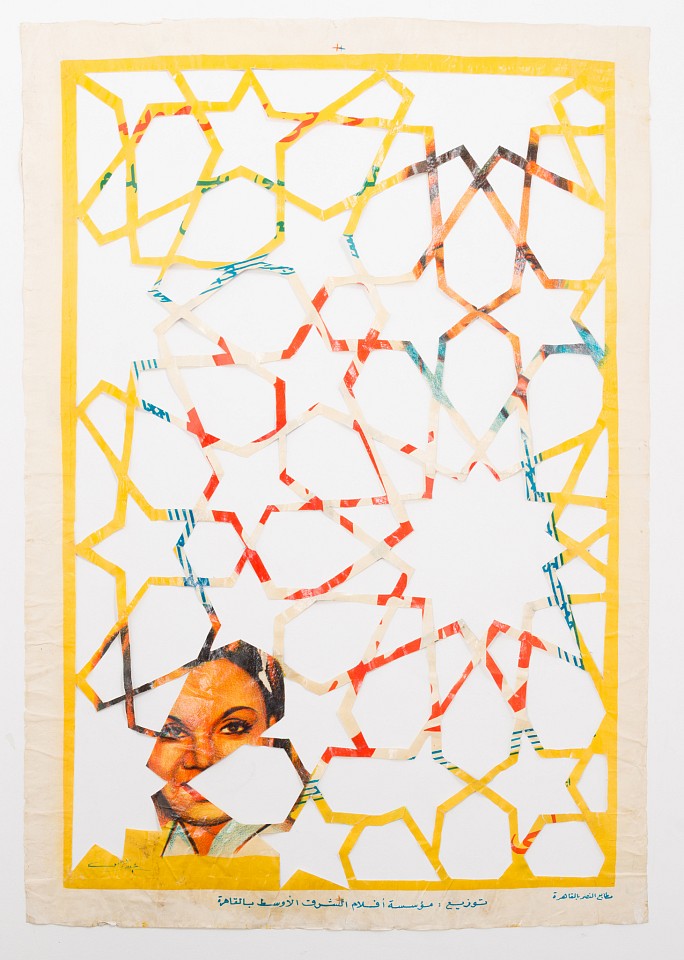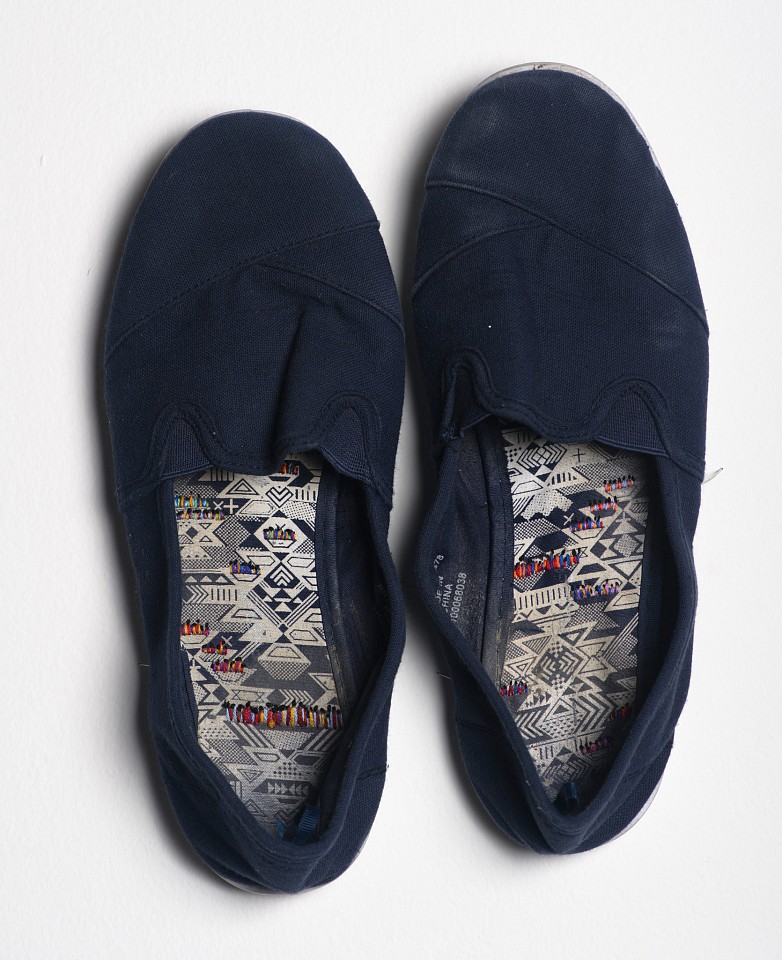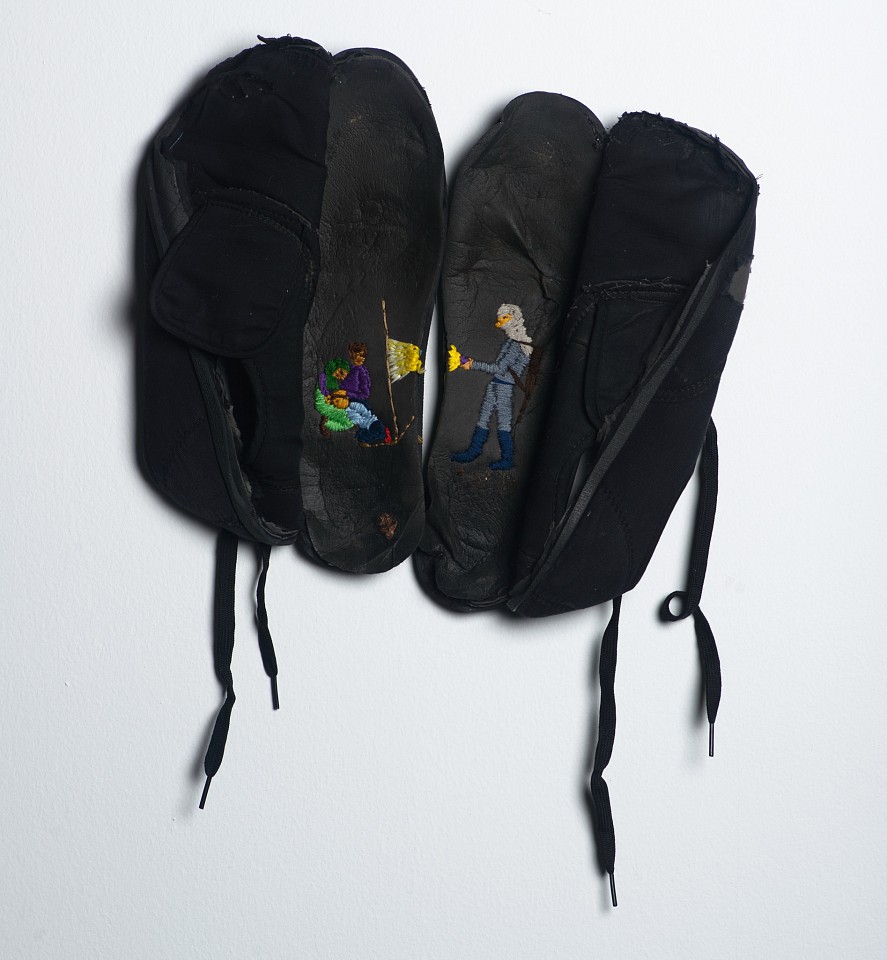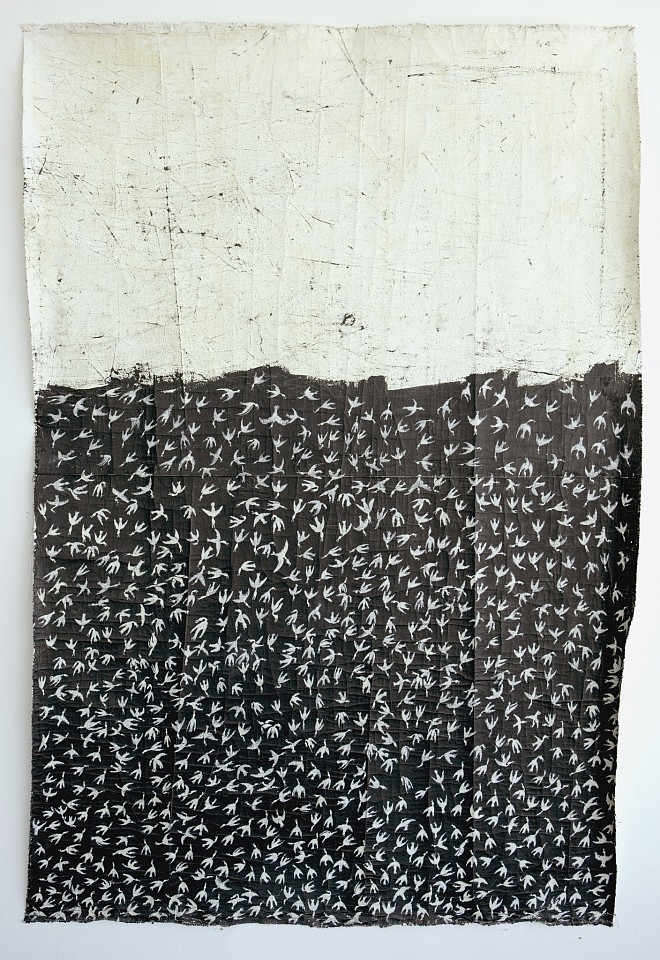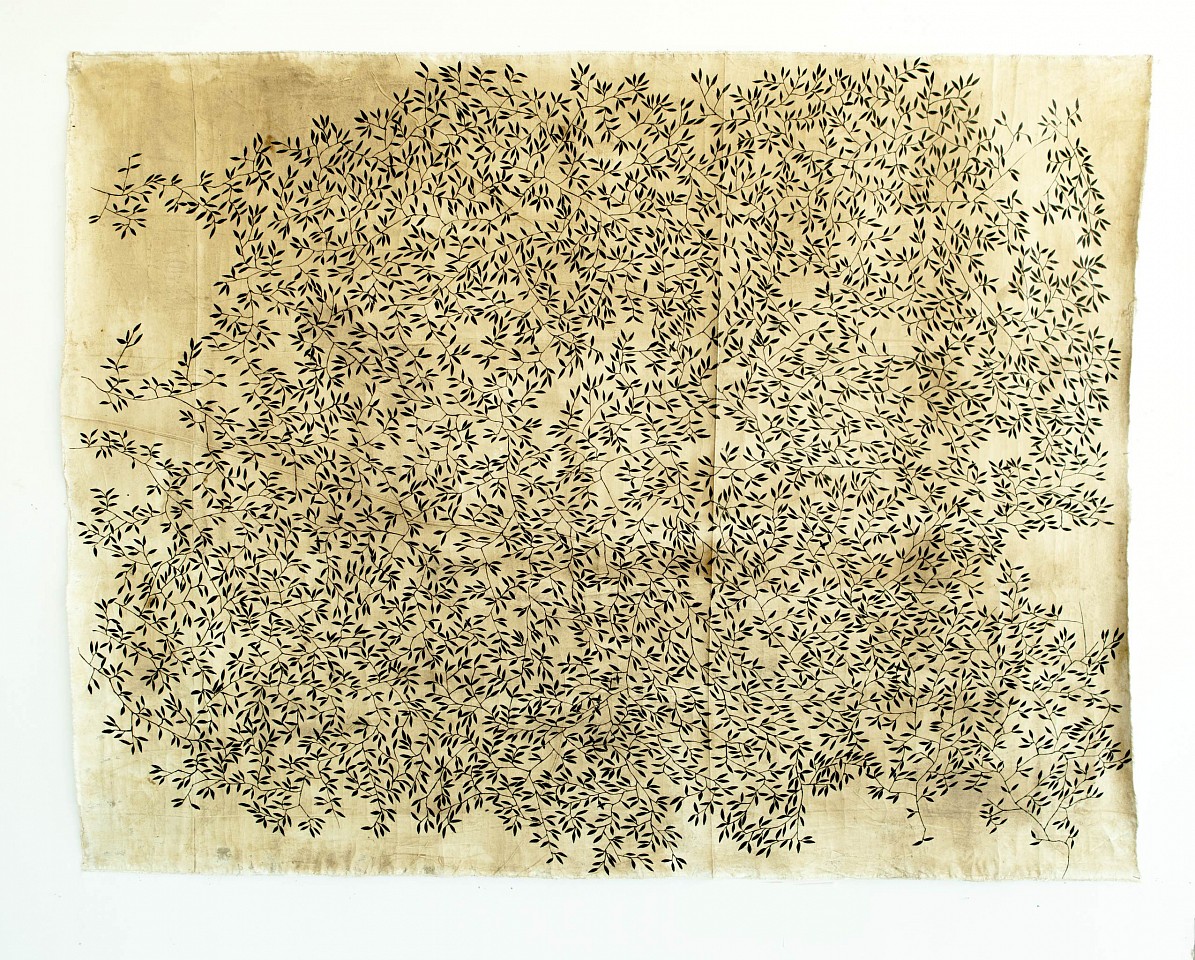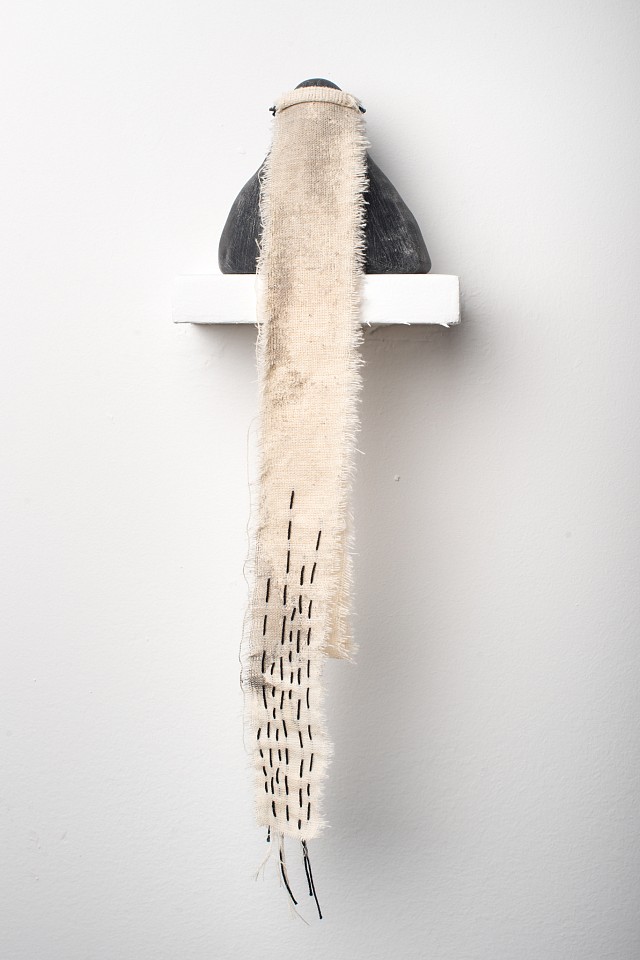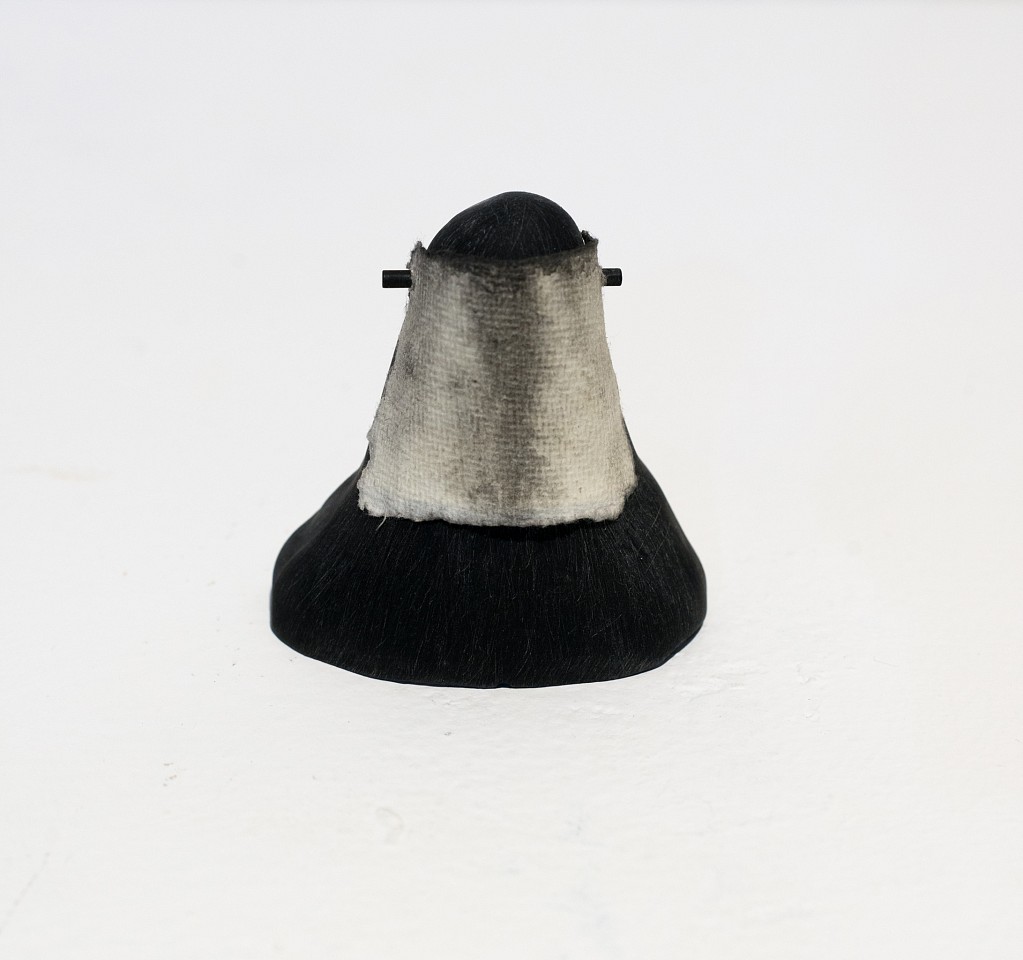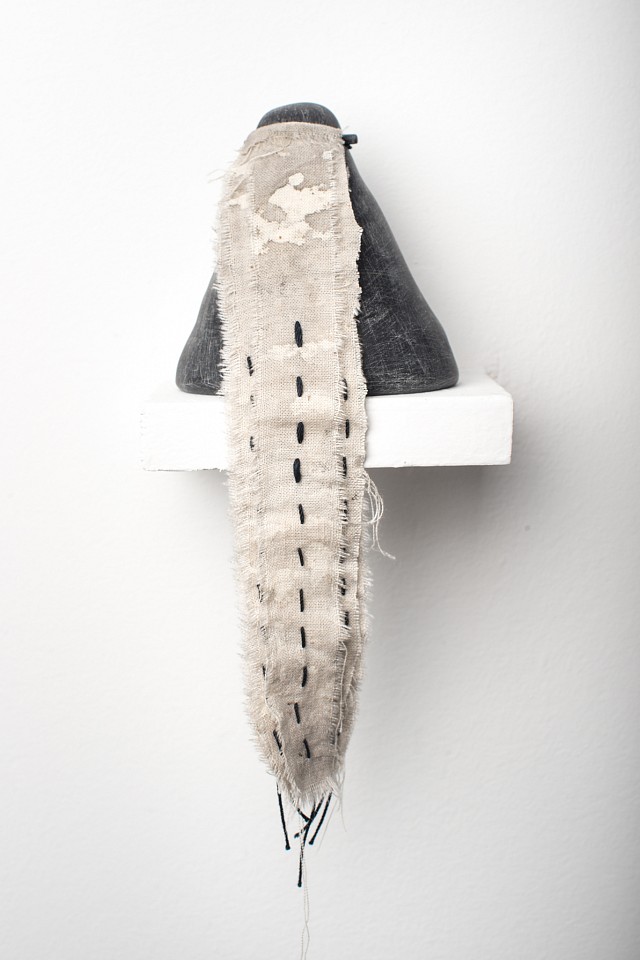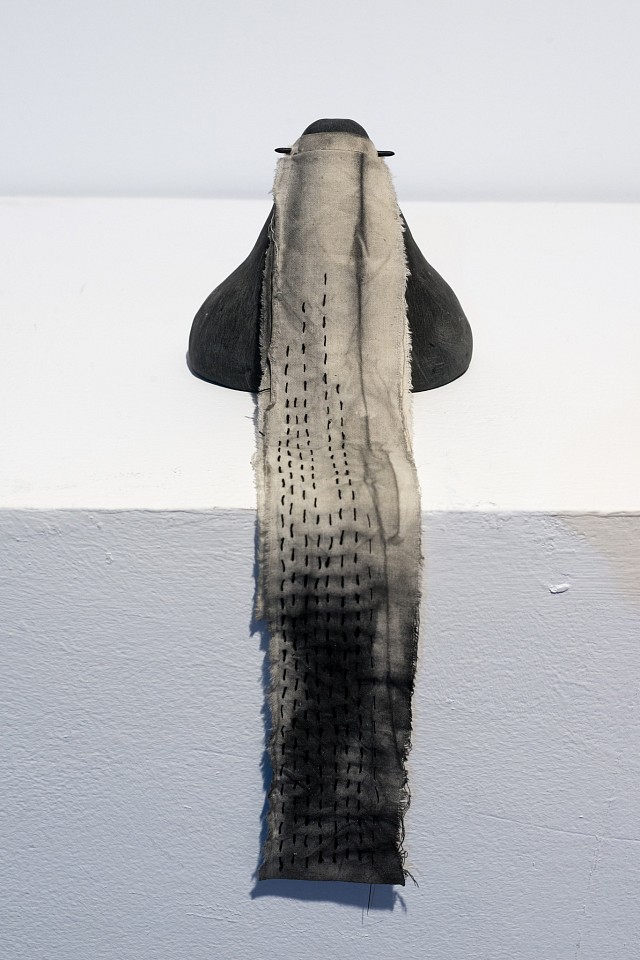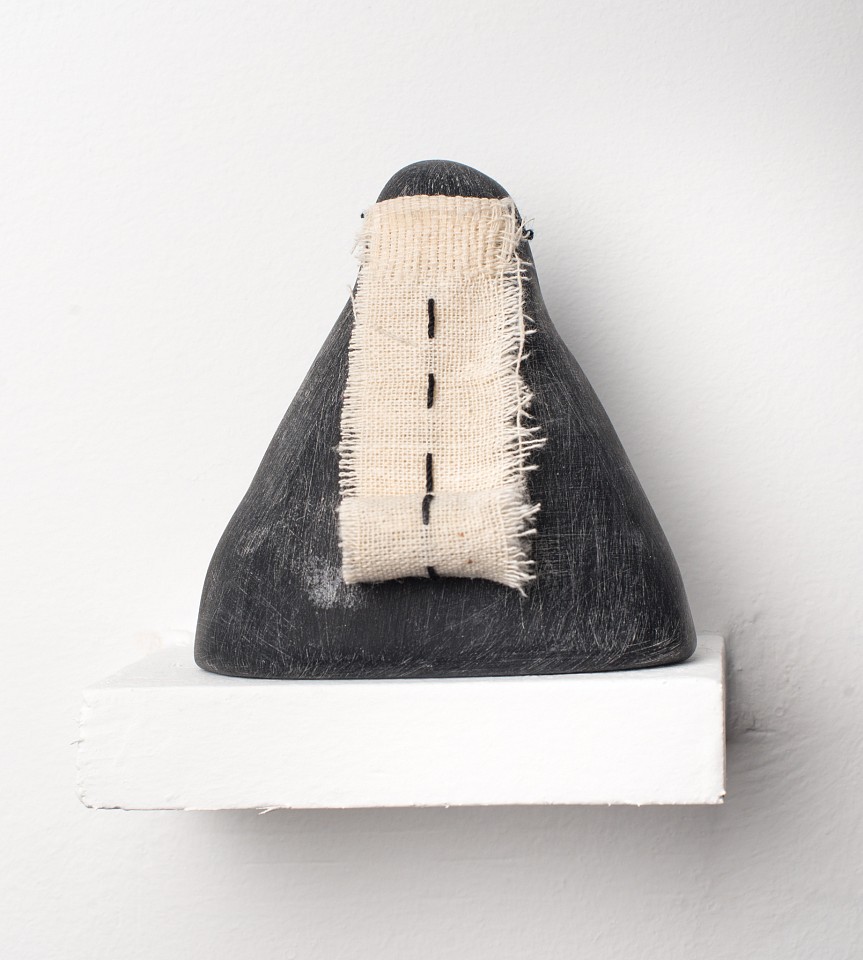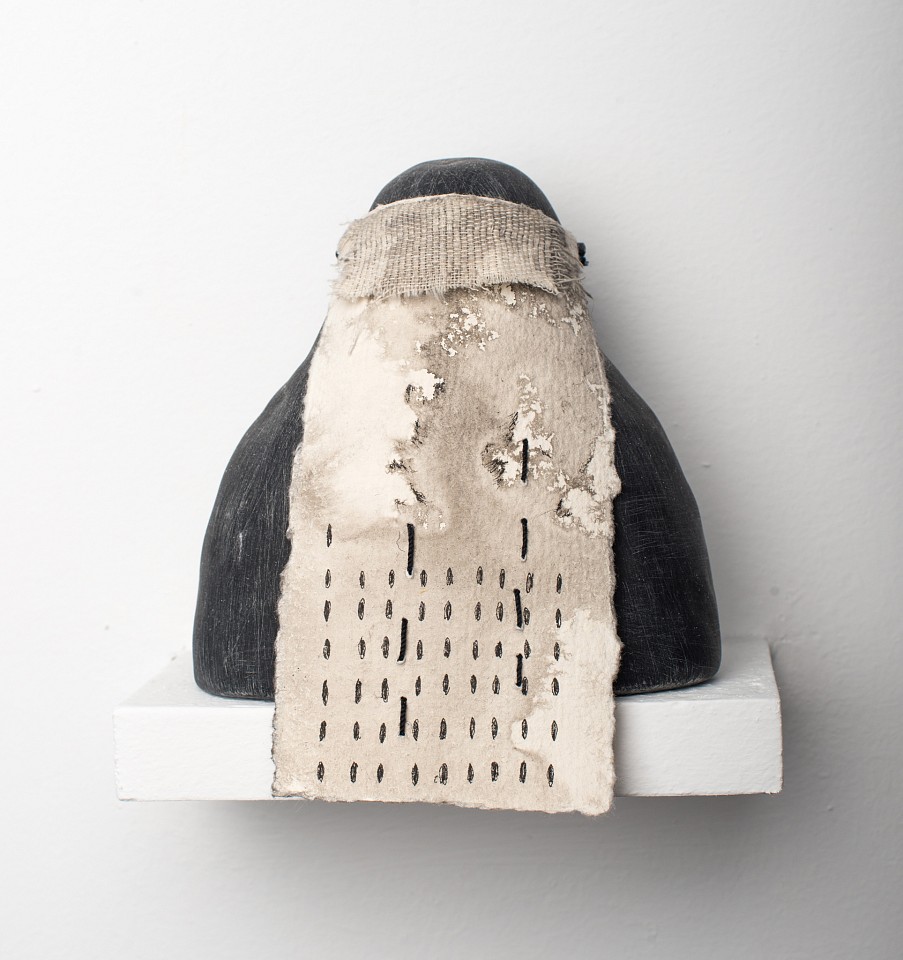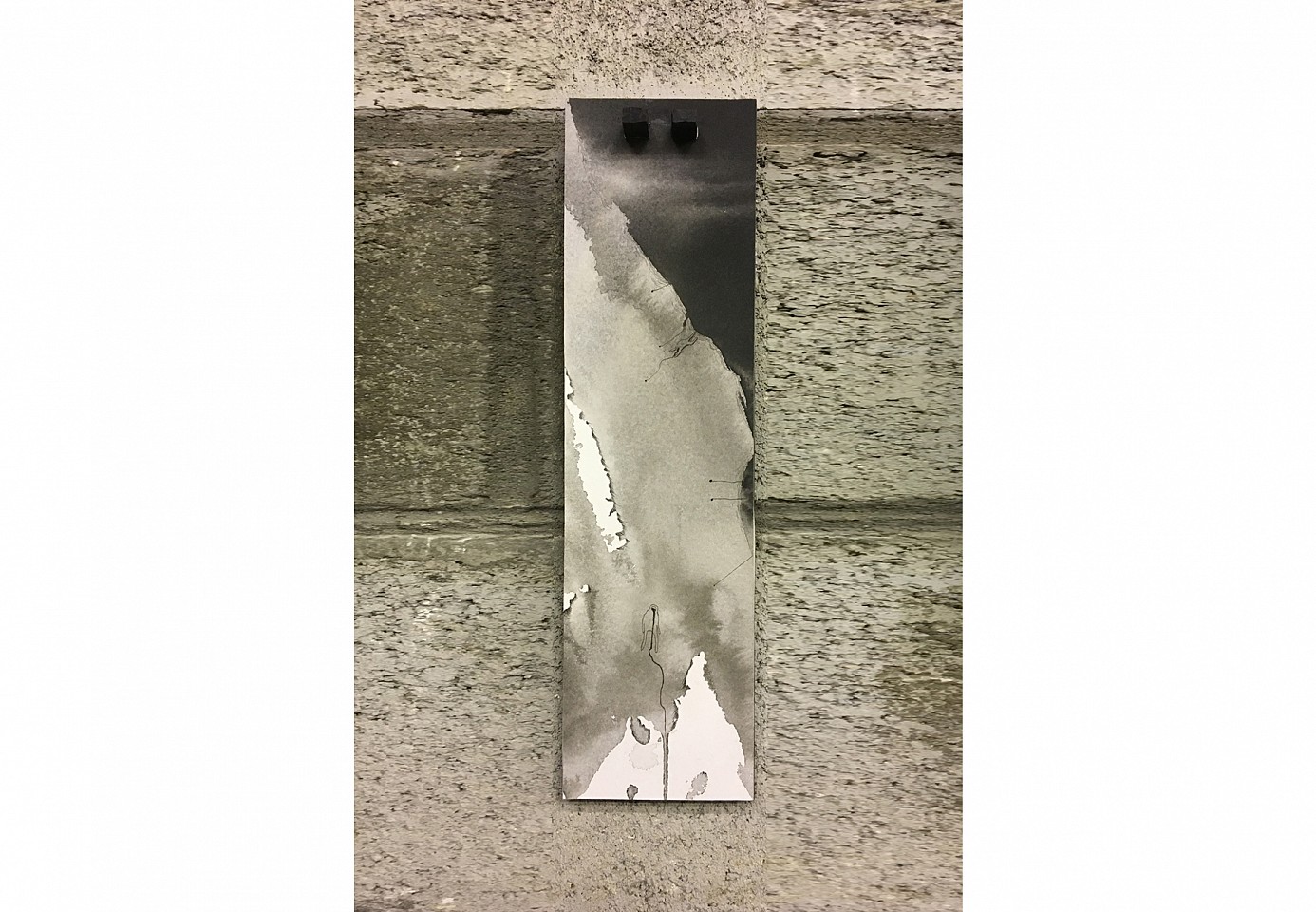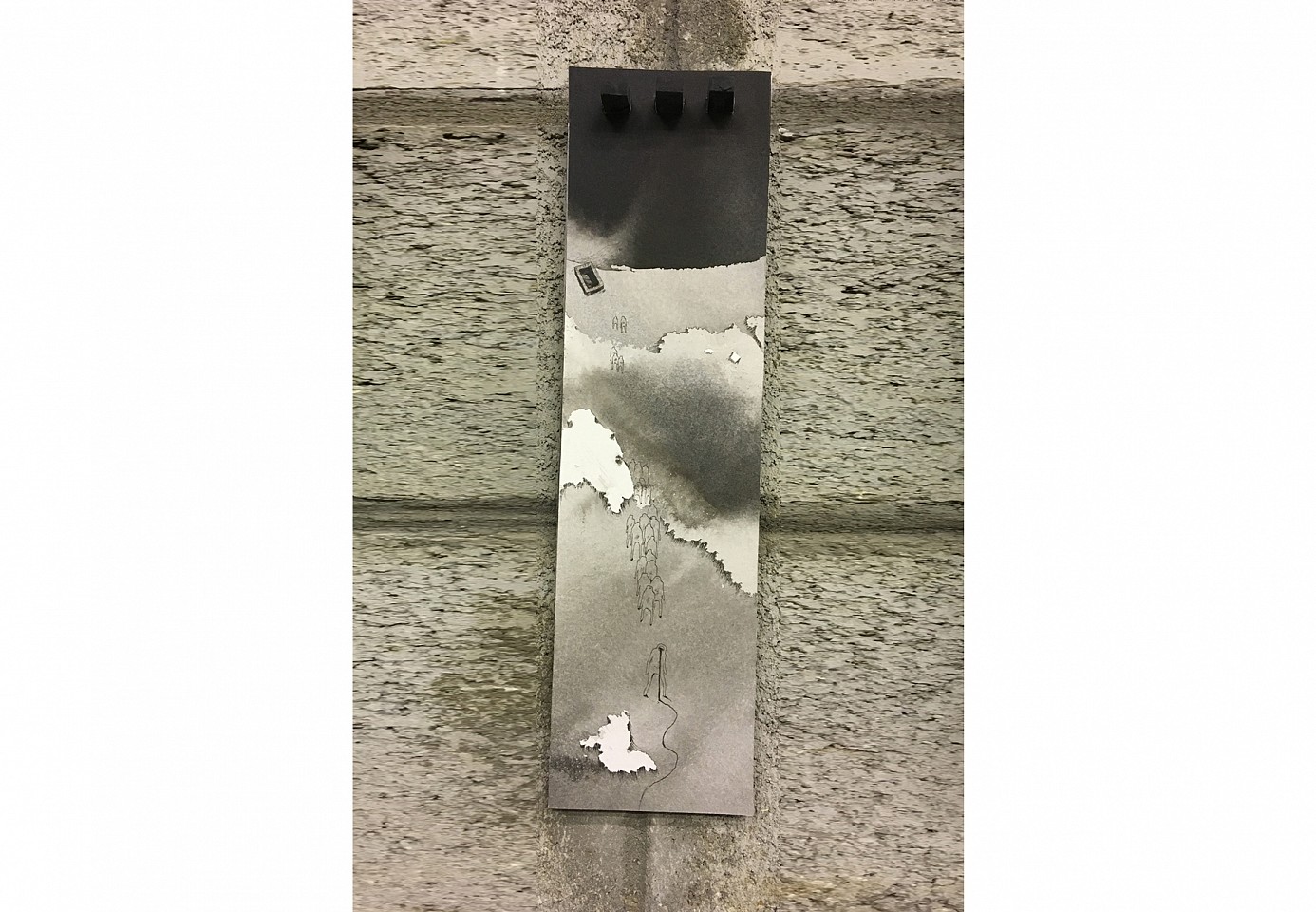Sara Abdu
See The Good In The Bad, And There Where It All Starts, 2011
Dry Ink on Paper
56.5 x 47.5 cm (22 1/4 x 18 3/4 in.)
SAB0073
Sara Abdu
The Voice Of Truth, 2011
Dry Ink on Paper
42.5 x 52.5 cm (16 3/4 x 20 5/8 in.)
SAB0058
Sara Abdu
Untitled, 2011
Dry Ink on Paper
37 x 47.5 cm (14 5/8 x 18 3/4 in.)
SAB0077
Sara Abdu
Untitled, 2010
Dry Ink on Paper
43 x 33 cm (16 7/8 x 13 in.)
SAB0054
Ahaad Al Amoudi
v=YGvLDDWwLEk, 2016
Video
Edition of 5
AAA0008
Abdul Aziz Al Rashidi
Noon, 2017
Ink on Paper
AAR0121
Abdul Aziz Al Rashidi
Qaaf, 2017
Ink on Paper
AAR0120
Abdul Aziz Al Rashidi
Saad, 2017
Ink on Paper
AAR0122
Abdul Aziz Al Rashidi
Tranquillity, 2017
Ink on Paper
AAR0115
Abdul Aziz Al Rashidi
Love IV, 2016
Ink on Paper
AAR0101
Nasser Al Salem
Allah [He is the First and the Last] I, 2018
Edition of 7
NAS0482
Nasser Al Salem
Allah [He is the First and the Last] II, 2018
Edition of 7
NAS0489
Nasser Al Salem
Allah [He is the First and the Last] III, 2018
Edition of 7
NAS0496
Dana Awartani
Jali 12, 2018
White gouach on translucent drafting film (3 layers)
DAN0157
Dana Awartani
Jali 3, 2018
White gouach on translucent drafting film (3 layers)
DAN0148
Dana Awartani
Progressional Drawing #16, 2016
Gel pen and colored pencil on paper
DAN0177
Dana Awartani
Progressional Drawing #17, 2016
Gel pen and colored pencil on paper
DAN0178
Ayman Yossri Daydban
Al Fotowwa, 2018
Oil on Paper (Vintage Poster)
AYD0725
Ayman Yossri Daydban
Untitled, 2018
Oil on Paper (Vintage Poster)
AYD0724
Aya Haidar
Boatloads, from the Soleless series, 2018
Embroidery on shoe soles
AYH0087
Aya Haidar
Stay low, from the Soleless series, 2018
Embroidery on shoe soles
AYH0090
Mohamed Monaiseer
Untitled 07 from Invasion series, 2018
Painting
MM0212
Mohamed Monaiseer
Untitled 18 from Barzakh series, 2018
Painting
MM0196
Mohamed Monaiseer
Untitled 20 from Barzakh series, 2018
Painting
MM0198
Muhannad Shono
Fal, from the heads of the tribe series, 2018
Polymer clay sculpture and paper
MSH0077
Muhannad Shono
Kal, from the Heads of the Tribe series, 2018
Polymer clay sculpture and paper
MSH0069
Muhannad Shono
Nal, from the heads of the tribe series, 2018
Polymer clay sculpture and paper
MSH0075
Muhannad Shono
Tal, from the Heads of the Tribe series, 2018
Polymer clay sculpture and fabric
MSH0067
Muhannad Shono
Wal, from the heads of the tribe series, 2018
Polymer clay sculpture and paper
MSH0076
Muhannad Shono
Zal, from the heads of the tribe series, 2018
Polymer clay sculpture and paper
MSH0074
Muhannad Shono
Untitiled 02 from the Four Seasons series, 2016
Ink on paper sculpture with polymer clay
10 x 37 cm
Muhannad Shono
Untitiled 03 from the Four Seasons series, 2016
Ink on paper sculpture with polymer clay
10 x 37 cm










![Nasser Al Salem, Allah [He is the First and the Last] I
2018, Print](/images/30252_h125w125gt.5.jpg)
![Nasser Al Salem, Allah [He is the First and the Last] II
2018, Print](/images/30253_h125w125gt.5.jpg)
![Nasser Al Salem, Allah [He is the First and the Last] III
2018, Print](/images/30251_h125w125gt.5.jpg)



















Tini Warwar, is an underground song that has found its way into the mainstream, and took over the music scene in Saudi Arabia in 2013. Different musicians and singers started making their own rendition of the song, and it is still considered a favorite among Saudi wedding singers.
This socio-cultural product is a reflection of the effects of globalization and the struggle of hegemony that is occurring in the Kingdom of Saudi Arabia. The song is a hybrid being that is a reflection of western influences, combined with Saudi traditional beats and a countdown from 10 to 1. The lyrics throughout the song are a comparison between the past and the present. It showcases current views of Saudis, and what they perceive to be more superior or powerful. It is an example of the economical social hierarchy within the society.
The dance preformed in the video is a traditional Arabian dance called “AlKhibayti”. In the past this dance was usually danced in preparation for war and has different influences including Sufi and Hejazi. Today this dance is usually danced as a cultural performance in weddings and social events
Allah is a multimedia installation by artist Nasser Al-Salem and the second iteration derived from an earlier work by the artist. The visual manifestation of the word Allah is an abstracted representation in which its letters are stripped down to basic geometric lines and shapes. Nasser explores through a minimalist approach how form and light can imitate an approximate representation of the divine.
The artist radically eschews the conventional and traditionalist aesthetic appeal of a calligraphic form in representing Allah, and creating an immersive and experiential representation.
Allah is a multimedia installation by artist Nasser Al-Salem and the second iteration derived from an earlier work by the artist. The visual manifestation of the word Allah is an abstracted representation in which its letters are stripped down to basic geometric lines and shapes. Nasser explores through a minimalist approach how form and light can imitate an approximate representation of the divine.
The artist radically eschews the conventional and traditionalist aesthetic appeal of a calligraphic form in representing Allah, and creating an immersive and experiential representation.
Allah is a multimedia installation by artist Nasser Al-Salem and the second iteration derived from an earlier work by the artist. The visual manifestation of the word Allah is an abstracted representation in which its letters are stripped down to basic geometric lines and shapes. Nasser explores through a minimalist approach how form and light can imitate an approximate representation of the divine.
The artist radically eschews the conventional and traditionalist aesthetic appeal of a calligraphic form in representing Allah, and creating an immersive and experiential representation.
This current body of work from the Soleless series has been produced in response to a 3 month artist residency program, working directly in reintegrating newly arrived Syrian refugee communities into the UK.
From this experience, first-hand accounts and interpersonal exchanges over the perilous passages ventured, stories of separation, loss and every day realities are intimately embroidered on the underside of worn shoes.
This current body of work from the Soleless series has been produced in response to a 3 month artist residency program, working directly in reintegrating newly arrived Syrian refugee communities into the UK.
From this experience, first-hand accounts and interpersonal exchanges over the perilous passages ventured, stories of separation, loss and every day realities are intimately embroidered on the underside of worn shoes.
In our species’ not so distant future, we have lost control of our stories.
Our world is now governed by tribal stories in their political, extremist, nationalistic, and sectarian genres. In this future, stories are diagnosed as a disease of the mind. An infection we must be quarantined away from.
In a bid to save itself from its own stories, our species sends forth its seeds into the stars in a mission to populate a new planet far away from the narratives of our own.
Carried on board a mother ship, whose mission is to sow a distant soil with a new, story-less, human tribe.
Each seed is a material that acts as a new technological skin, encasing the human life that grows within it.
A skin that is the final layer of our technological evolution designed to imprison the human instinct to tell stories.
There is no thirst inside this skin, no hunger, no illness or pain. The individual within is rendered self-sufficient, self-reliant and in no need of the collective tribe. The skin, through its obscuring helmet, prevents all human emotions and forms of expression from being transmitted out.
Any attempt to tell a story is caught by algorithms that censor, filter out, and mute through this wearable firewall.
But within this new tribe, the need to share the stories they each carried in isolation only grows stronger.
Until the first helmet is removed and a story is told.
Then the second helmet is removed and a story is first heard.
And when all the helmets are removed, the stories spread through the tribe until there is no one left to tell them, or for stories to be heard.
Except for one, ‘Al Al-Ashirah’, the one who placed back his helmet and returned to our planet, bringing with him the stories of his tribe.
In our species’ not so distant future, we have lost control of our stories.
Our world is now governed by tribal stories in their political, extremist, nationalistic, and sectarian genres. In this future, stories are diagnosed as a disease of the mind. An infection we must be quarantined away from.
In a bid to save itself from its own stories, our species sends forth its seeds into the stars in a mission to populate a new planet far away from the narratives of our own.
Carried on board a mother ship, whose mission is to sow a distant soil with a new, story-less, human tribe.
Each seed is a material that acts as a new technological skin, encasing the human life that grows within it.
A skin that is the final layer of our technological evolution designed to imprison the human instinct to tell stories.
There is no thirst inside this skin, no hunger, no illness or pain. The individual within is rendered self-sufficient, self-reliant and in no need of the collective tribe. The skin, through its obscuring helmet, prevents all human emotions and forms of expression from being transmitted out.
Any attempt to tell a story is caught by algorithms that censor, filter out, and mute through this wearable firewall.
But within this new tribe, the need to share the stories they each carried in isolation only grows stronger.
Until the first helmet is removed and a story is told.
Then the second helmet is removed and a story is first heard.
And when all the helmets are removed, the stories spread through the tribe until there is no one left to tell them, or for stories to be heard.
Except for one, ‘Al Al-Ashirah’, the one who placed back his helmet and returned to our planet, bringing with him the stories of his tribe.
In our species’ not so distant future, we have lost control of our stories.
Our world is now governed by tribal stories in their political, extremist, nationalistic, and sectarian genres. In this future, stories are diagnosed as a disease of the mind. An infection we must be quarantined away from.
In a bid to save itself from its own stories, our species sends forth its seeds into the stars in a mission to populate a new planet far away from the narratives of our own.
Carried on board a mother ship, whose mission is to sow a distant soil with a new, story-less, human tribe.
Each seed is a material that acts as a new technological skin, encasing the human life that grows within it.
A skin that is the final layer of our technological evolution designed to imprison the human instinct to tell stories.
There is no thirst inside this skin, no hunger, no illness or pain. The individual within is rendered self-sufficient, self-reliant and in no need of the collective tribe. The skin, through its obscuring helmet, prevents all human emotions and forms of expression from being transmitted out.
Any attempt to tell a story is caught by algorithms that censor, filter out, and mute through this wearable firewall.
But within this new tribe, the need to share the stories they each carried in isolation only grows stronger.
Until the first helmet is removed and a story is told.
Then the second helmet is removed and a story is first heard.
And when all the helmets are removed, the stories spread through the tribe until there is no one left to tell them, or for stories to be heard.
Except for one, ‘Al Al-Ashirah’, the one who placed back his helmet and returned to our planet, bringing with him the stories of his tribe.
In our species’ not so distant future, we have lost control of our stories.
Our world is now governed by tribal stories in their political, extremist, nationalistic, and sectarian genres. In this future, stories are diagnosed as a disease of the mind. An infection we must be quarantined away from.
In a bid to save itself from its own stories, our species sends forth its seeds into the stars in a mission to populate a new planet far away from the narratives of our own.
Carried on board a mother ship, whose mission is to sow a distant soil with a new, story-less, human tribe.
Each seed is a material that acts as a new technological skin, encasing the human life that grows within it.
A skin that is the final layer of our technological evolution designed to imprison the human instinct to tell stories.
There is no thirst inside this skin, no hunger, no illness or pain. The individual within is rendered self-sufficient, self-reliant and in no need of the collective tribe. The skin, through its obscuring helmet, prevents all human emotions and forms of expression from being transmitted out.
Any attempt to tell a story is caught by algorithms that censor, filter out, and mute through this wearable firewall.
But within this new tribe, the need to share the stories they each carried in isolation only grows stronger.
Until the first helmet is removed and a story is told.
Then the second helmet is removed and a story is first heard.
And when all the helmets are removed, the stories spread through the tribe until there is no one left to tell them, or for stories to be heard.
Except for one, ‘Al Al-Ashirah’, the one who placed back his helmet and returned to our planet, bringing with him the stories of his tribe.
In our species’ not so distant future, we have lost control of our stories.
Our world is now governed by tribal stories in their political, extremist, nationalistic, and sectarian genres. In this future, stories are diagnosed as a disease of the mind. An infection we must be quarantined away from.
In a bid to save itself from its own stories, our species sends forth its seeds into the stars in a mission to populate a new planet far away from the narratives of our own.
Carried on board a mother ship, whose mission is to sow a distant soil with a new, story-less, human tribe.
Each seed is a material that acts as a new technological skin, encasing the human life that grows within it.
A skin that is the final layer of our technological evolution designed to imprison the human instinct to tell stories.
There is no thirst inside this skin, no hunger, no illness or pain. The individual within is rendered self-sufficient, self-reliant and in no need of the collective tribe. The skin, through its obscuring helmet, prevents all human emotions and forms of expression from being transmitted out.
Any attempt to tell a story is caught by algorithms that censor, filter out, and mute through this wearable firewall.
But within this new tribe, the need to share the stories they each carried in isolation only grows stronger.
Until the first helmet is removed and a story is told.
Then the second helmet is removed and a story is first heard.
And when all the helmets are removed, the stories spread through the tribe until there is no one left to tell them, or for stories to be heard.
Except for one, ‘Al Al-Ashirah’, the one who placed back his helmet and returned to our planet, bringing with him the stories of his tribe.
In our species’ not so distant future, we have lost control of our stories.
Our world is now governed by tribal stories in their political, extremist, nationalistic, and sectarian genres. In this future, stories are diagnosed as a disease of the mind. An infection we must be quarantined away from.
In a bid to save itself from its own stories, our species sends forth its seeds into the stars in a mission to populate a new planet far away from the narratives of our own.
Carried on board a mother ship, whose mission is to sow a distant soil with a new, story-less, human tribe.
Each seed is a material that acts as a new technological skin, encasing the human life that grows within it.
A skin that is the final layer of our technological evolution designed to imprison the human instinct to tell stories.
There is no thirst inside this skin, no hunger, no illness or pain. The individual within is rendered self-sufficient, self-reliant and in no need of the collective tribe. The skin, through its obscuring helmet, prevents all human emotions and forms of expression from being transmitted out.
Any attempt to tell a story is caught by algorithms that censor, filter out, and mute through this wearable firewall.
But within this new tribe, the need to share the stories they each carried in isolation only grows stronger.
Until the first helmet is removed and a story is told.
Then the second helmet is removed and a story is first heard.
And when all the helmets are removed, the stories spread through the tribe until there is no one left to tell them, or for stories to be heard.
Except for one, ‘Al Al-Ashirah’, the one who placed back his helmet and returned to our planet, bringing with him the stories of his tribe.
ATHR participates in Abu Dhabi Art, occurring in November 14 until November 17, at Manarat Al Saadiyat, Saadiyat Cultural District.
ATHR is proud to present at this year’s Art Abu Dhabi the works of Ahaad Alamoudi, Aya Haidar, Ayman Yossri, Ayman Zedani, Carlos Cruz-Diez, Dana Awartani, Dania Al Saleh, Farah Behbehani, Leo Villareal, Mohammed Monaiseer, Muhannad Shono, Nasser Al-Salem, Sara Abdu, and Sultan Bin Fahad.
Art Abu Dhabi is a leading international art fair that takes place every November. Each year, the fair introduces established galleries from around the world catering to art connoisseurs, art patrons and emerging collectors.

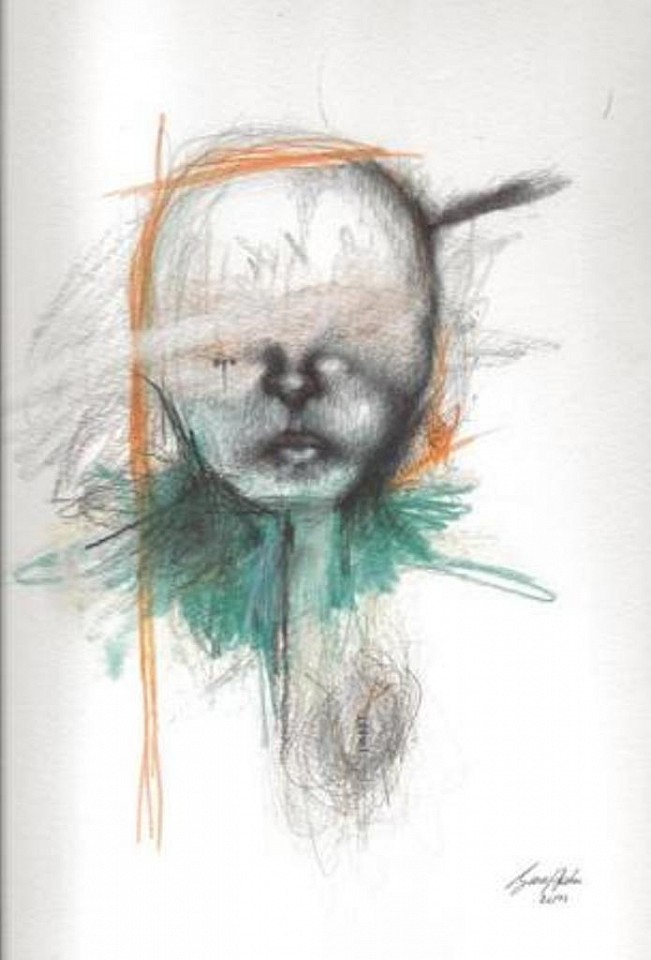

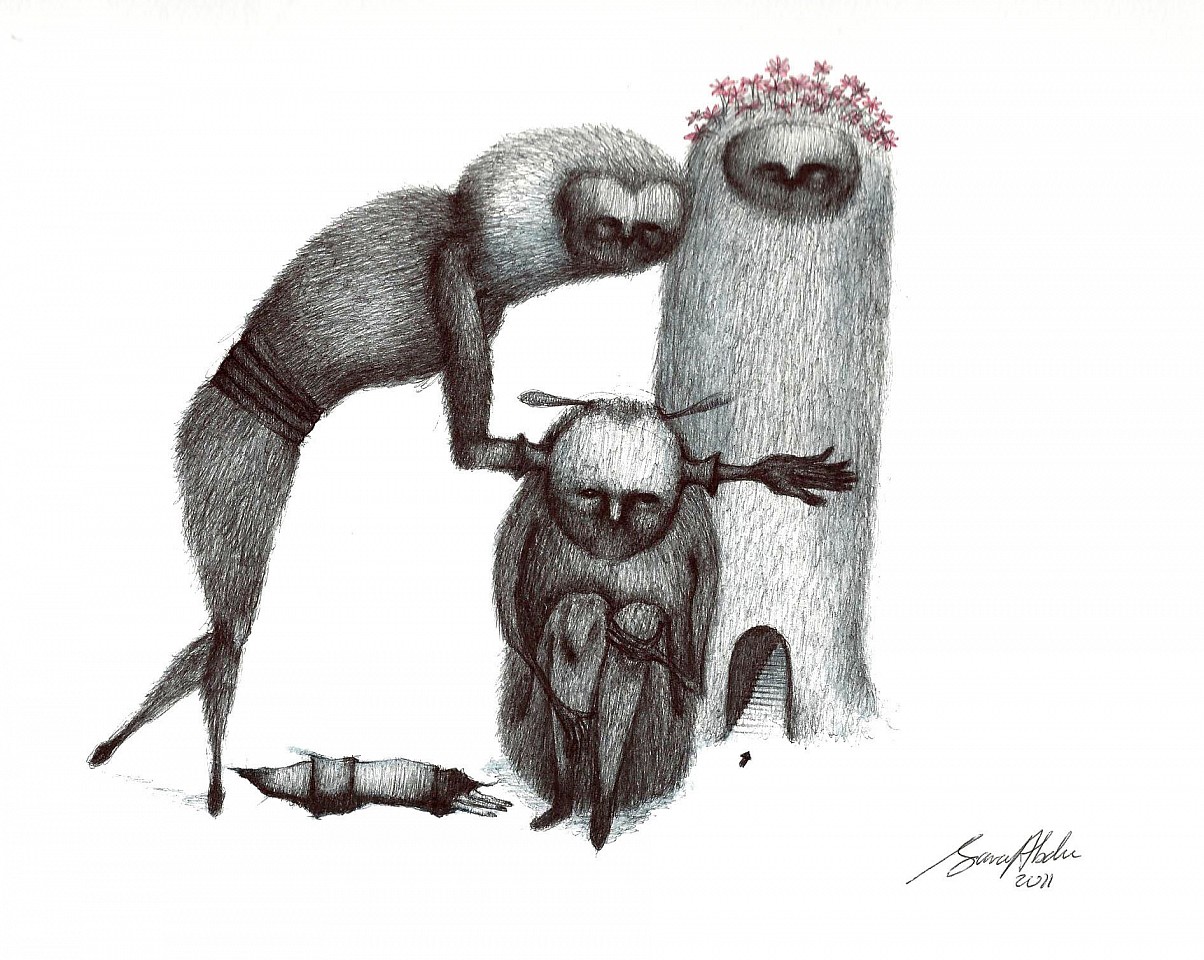
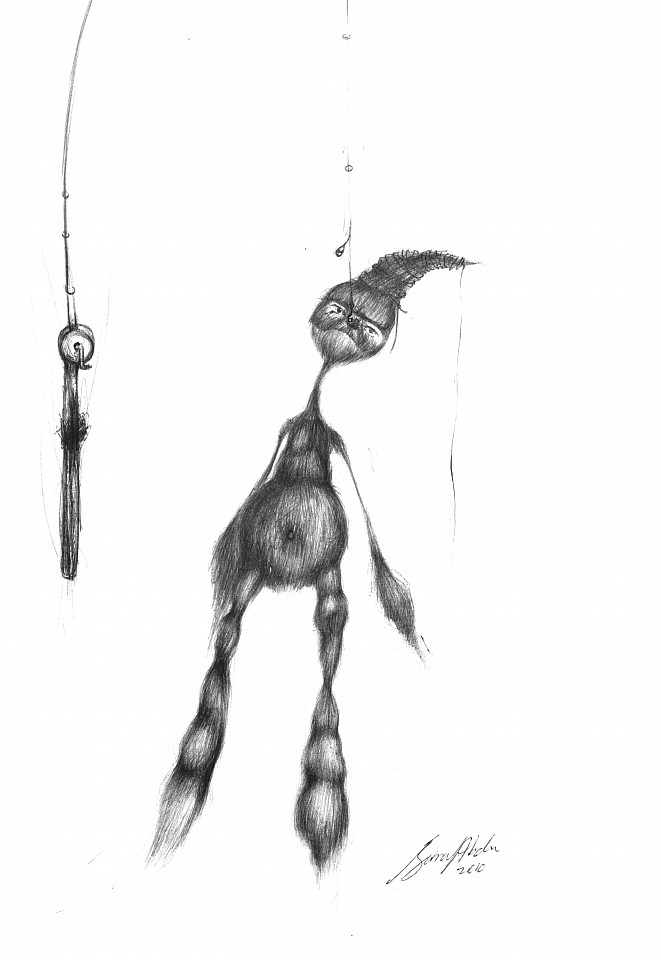
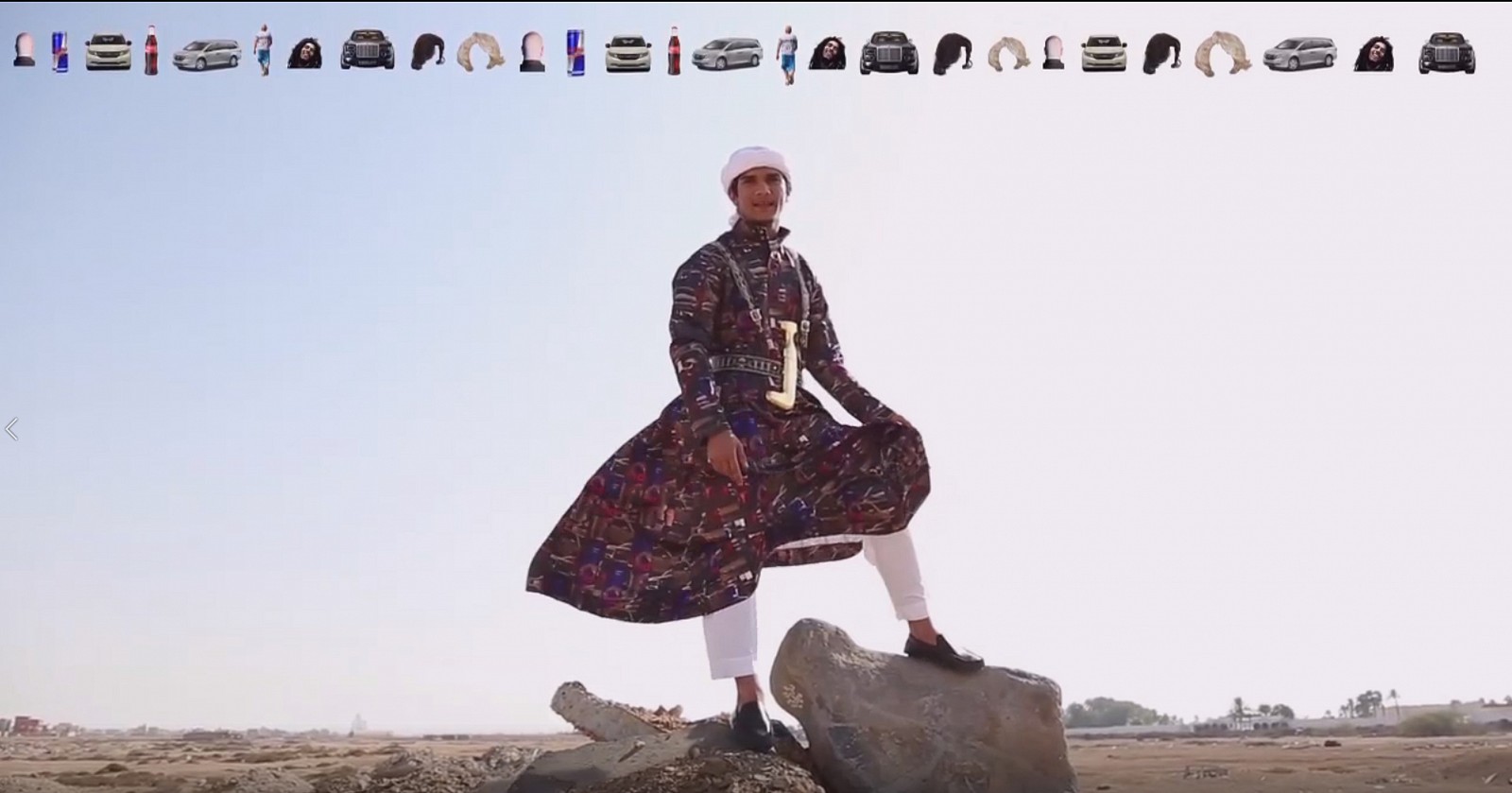
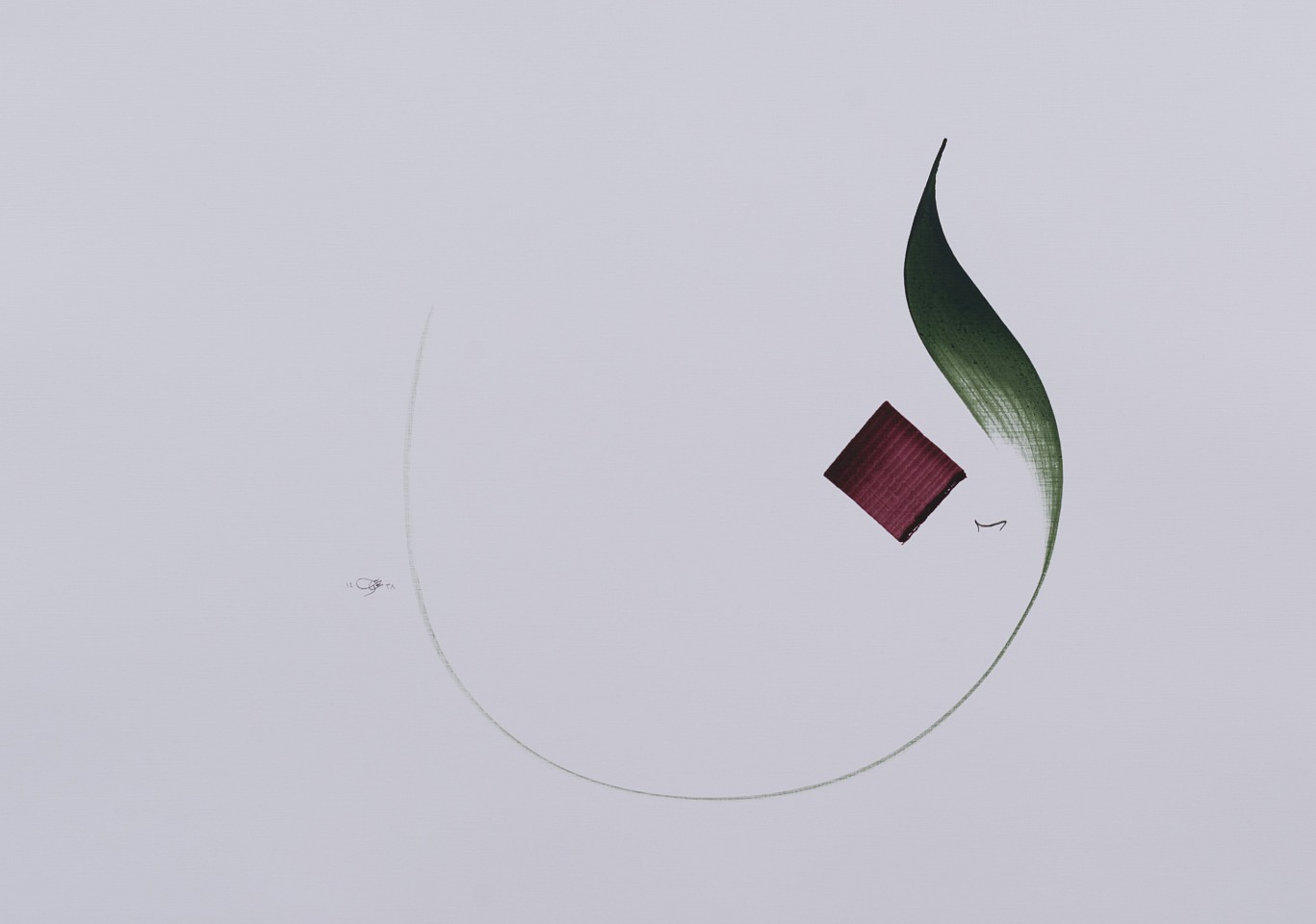
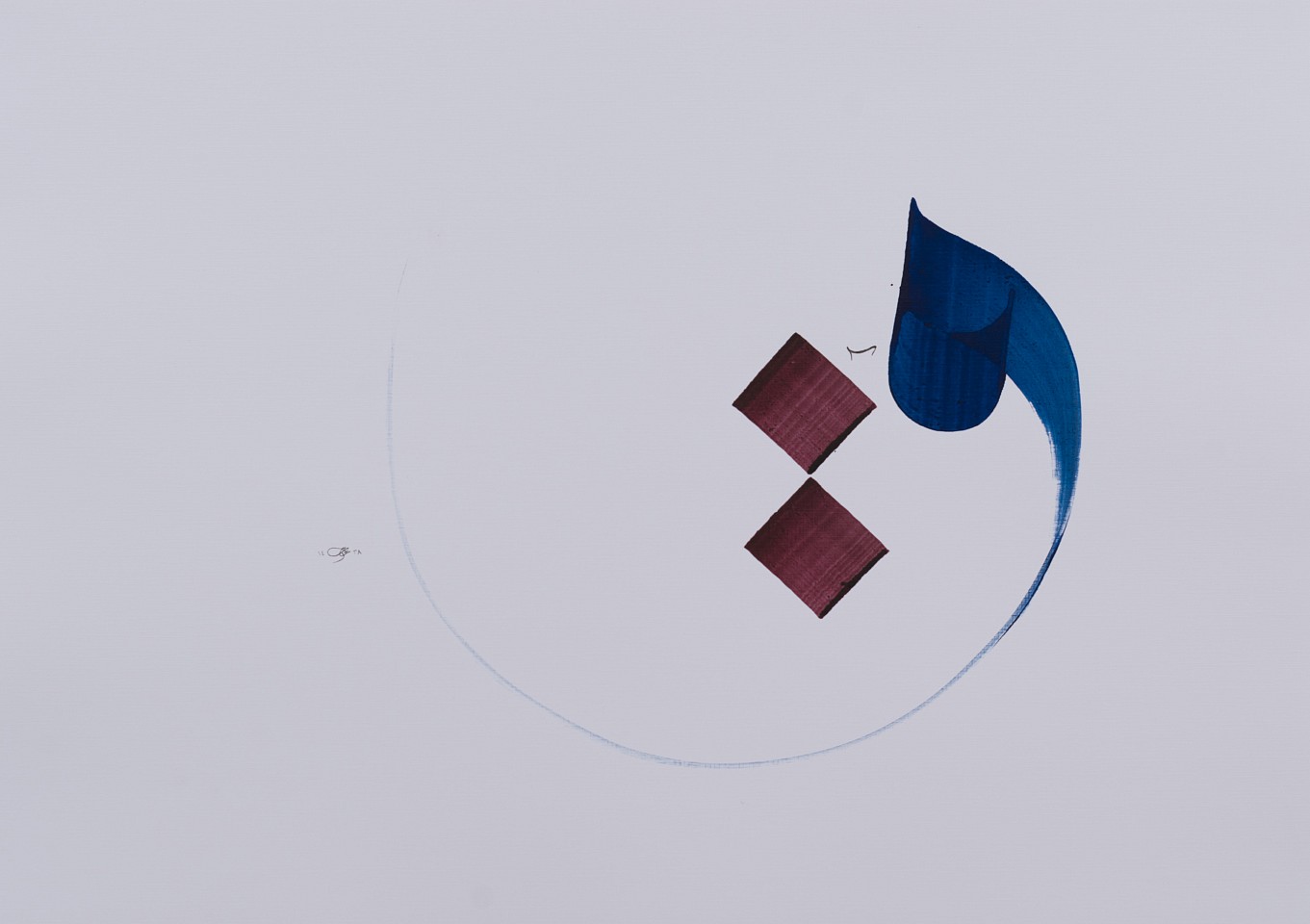

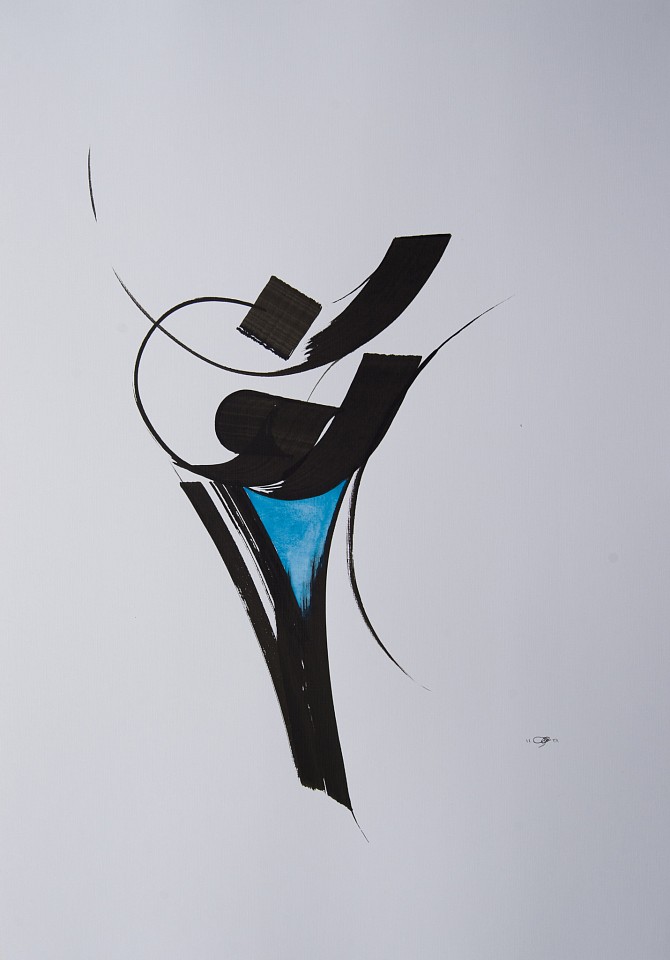
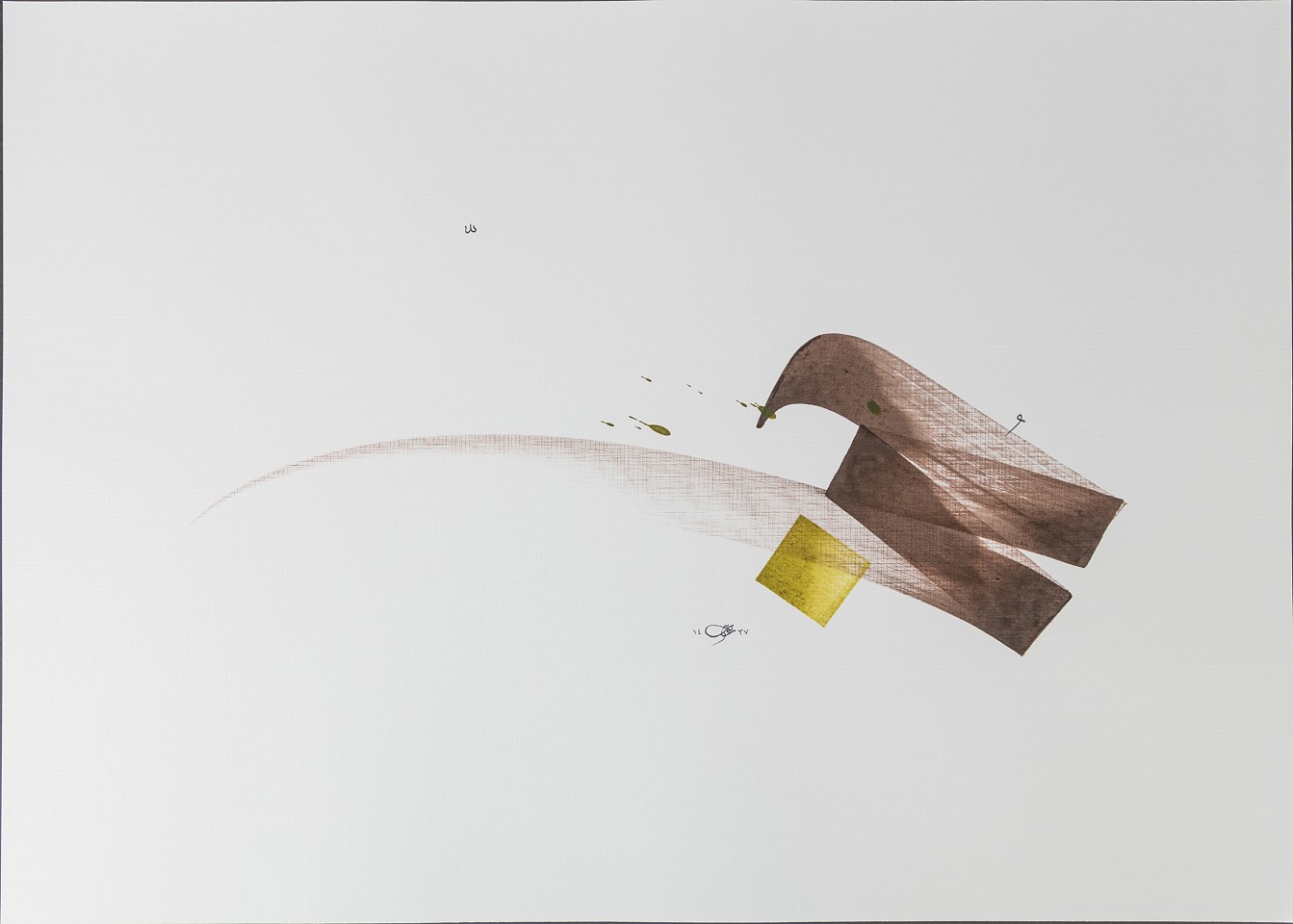
![<p><span class="viewer-caption-artist">Nasser Al Salem</span></p>
<p><span class="viewer-caption-title"><i>Allah [He is the First and the Last] I</i></span>, <span class="viewer-caption-year">2018</span></p>
<p><span class="viewer-caption-media">Print</span></p>
<p><span class="viewer-caption-description">Edition of 7</span></p>
<p><span class="viewer-caption-inventory">NAS0482</span></p>
<p><span class="viewer-caption-aux"></span></p>](/images/30252_h960w1600gt.5.jpg)
![<p><span class="viewer-caption-artist">Nasser Al Salem</span></p>
<p><span class="viewer-caption-title"><i>Allah [He is the First and the Last] II</i></span>, <span class="viewer-caption-year">2018</span></p>
<p><span class="viewer-caption-media">Print</span></p>
<p><span class="viewer-caption-description">Edition of 7</span></p>
<p><span class="viewer-caption-inventory">NAS0489</span></p>
<p><span class="viewer-caption-aux"></span></p>](/images/30253_h960w1600gt.5.jpg)
![<p><span class="viewer-caption-artist">Nasser Al Salem</span></p>
<p><span class="viewer-caption-title"><i>Allah [He is the First and the Last] III</i></span>, <span class="viewer-caption-year">2018</span></p>
<p><span class="viewer-caption-media">Print</span></p>
<p><span class="viewer-caption-description">Edition of 7</span></p>
<p><span class="viewer-caption-inventory">NAS0496</span></p>
<p><span class="viewer-caption-aux"></span></p>](/images/30251_h960w1600gt.5.jpg)
